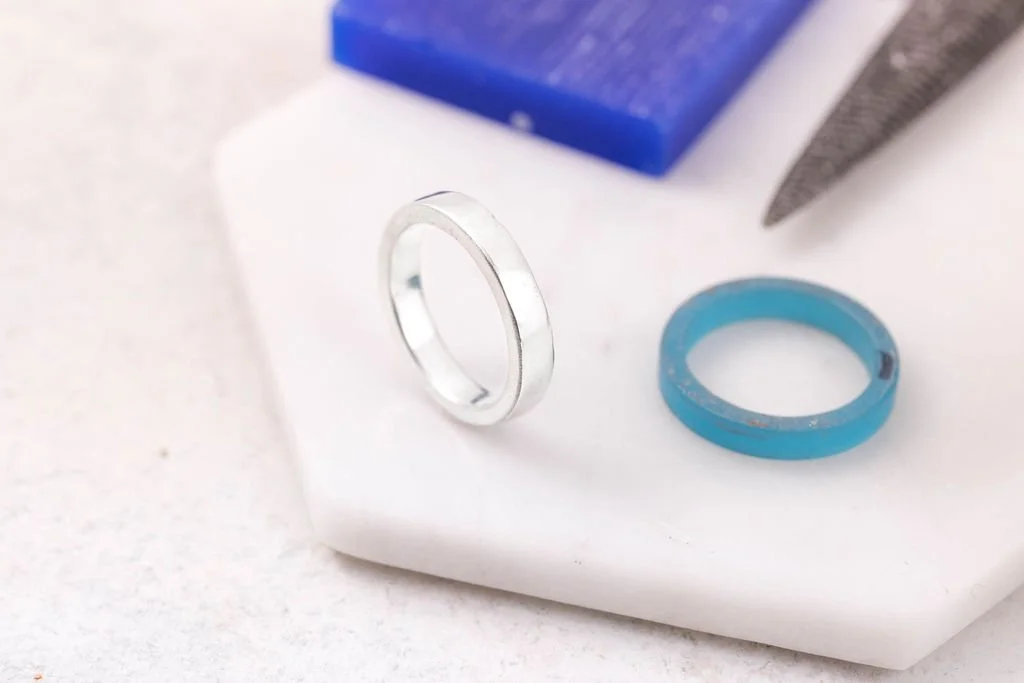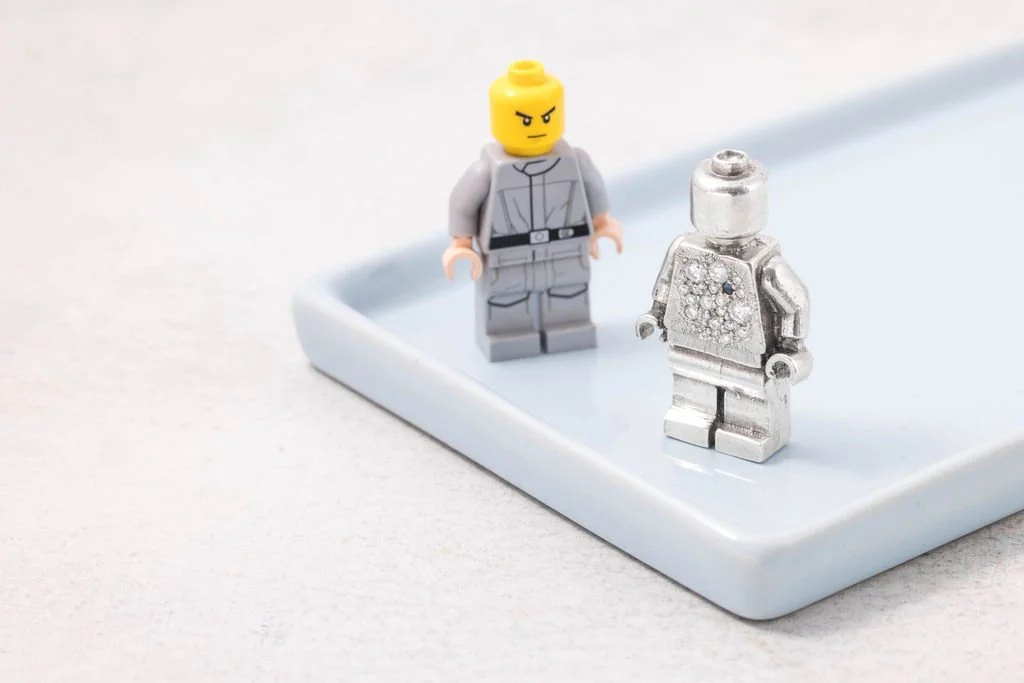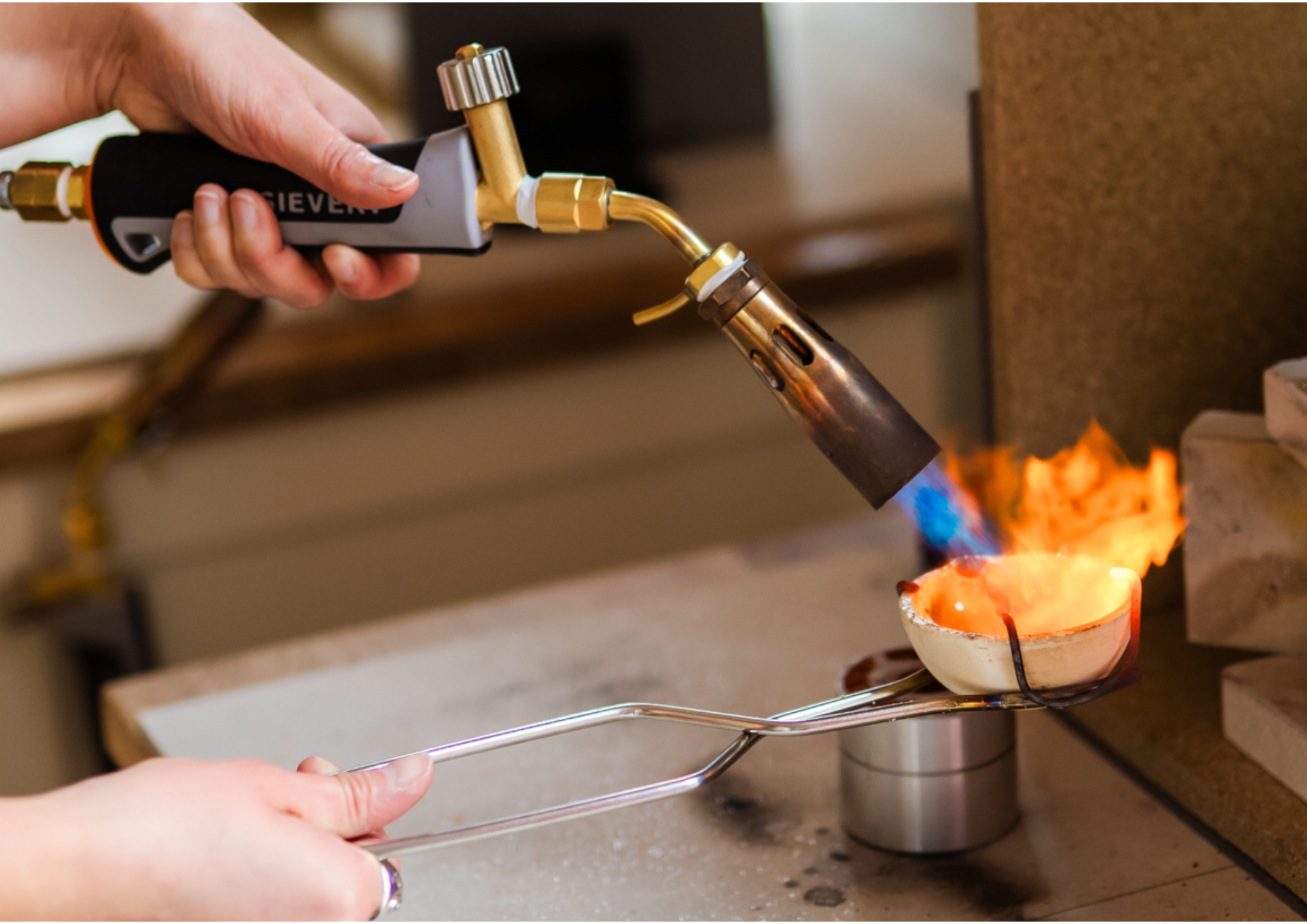Sand Casting - A Step by Step Guide to the Process and Glossary of Key Terms
Are you curious about sand casting?
This beginners guide takes you through what the technique is, how it works, and includes a glossary of the key terms you need to know.
What is Sand Casting?
Sand casting is a metal-casting process where you make a mould in sand (or a sand-based mixture) around a pattern. Molten metal is poured into the mould cavity, left to solidify and cool, then the sand mould is broken away to leave the cast metal.
For jewellery makers, sand casting is a great way to cast your wax carved pieces yourself. Here is an example of a wax mould that has been cast using this process.
You can also cast other objects/ organic textures etc with a fairly basic equipment set up. Here are some examples:
Casting a heart charm
Casting a lego figure
(Remember that some items like lego are copyright so while you can cast them, you are not able to sell copies)
You can also cast heatproof stones in place in the metal
Sand casting is an especially good technique for you if you are creating small-batch or bespoke pieces, capturing texture and embracing the imperfection; of the mould surface as part of the design aesthetic.
In our brand new professionally filmed online course Sand Casting for Jewellers, you’ll learn how to set up your sand casting area, prepare your moulds, safely melt and pour metal, cast rings, pendants or charms (and even cast heat-proof stones in place), and clean up the casting ready for finishing.
How Sand Casting Works
Here’s an overview of how sand casting works.
Design your mould
You create the positive model of the piece you want: this may be carved wax, metal or another material. This is what determines the shape of the final piece.Prepare the mould
The pattern is placed in a flask (a container) and packed with sand (or sand-clay mixture). Once the pattern is removed, a mould cavity of your design is left in the sand.Create the gating system
You form channels (sprue, runners, gates) through which the molten metal will flow into the cavity. You may also include a riser to feed metal during solidification to avoid shrinkage.Melt the metal
Using a crucible (and torch), the metal (which can include recycled scrap + new casting grain) is heated until molten.Pour the metal
The molten metal is carefully poured into the mould via the sprue system. Good safety practice is crucial here.Allow to cool and remove the casting
After the metal solidifies and cools to a safe handling temperature, you break away the sand mould and you will have your casting.Clean up & finish
The casting will require removing gates/runners. This means you need to saw and file to remove the excess metal and then you can sand and polish the piece.Optional: Cast-in-place stones
For more advanced work, you may place heat-resistant gemstones in the mould before pouring so the metal flows around them and the stones become embedded in the casting. This adds design possibilities (covered in the course).
Glossary of key terms in sand casting
Here’s a handy glossary of important terms you’ll come across when working with sand casting in jewellery. Keep it bookmarked for reference.
Sand casting
A metal-casting process in which a mould is formed in recess/mould in sand; molten metal is poured in, allowed to solidify, and the sand is broken away to retrieve the casting.
Pattern
The original model of the piece (wax, metal, or other material) used to form the impression in the sand mould.
Mould / Mold cavity
The hollow space inside the sand mould created when the pattern is removed; this cavity is where the molten metal flows and forms the piece.
Flask (Cope & Drag)
The container that holds the sand for the mould. It often consists of two parts: the top half (cope) and the bottom half (drag).
Sprue / Gate / Runner
The network of channels created in the mould: the sprue is the main entry, runners distribute metal, and gates are the points where metal enters the mould cavity.
Riser
A reservoir or channel that supplies metal to the casting as it solidifies, compensating for shrinkage and helping prevent voids or defects.
Shrinkage allowance / Contraction allowance
Extra size included in the pattern (or compensation in the design) to allow for the fact that metals shrink during solidification and cooling.
Green sand
A sand mould mixture using water and clay as a binder, used in its “green” (unbaked) state.
No-bake / Air-set sand
A sand mixture bonded by resin or catalyst and set at room temperature (no baking required).
Cast-in-place gemstone
A technique where a heat-resistant gemstone is placed in the mould before the pour so the metal flows around and embeds the stone in the casting.
Surface texture / Organic texture
The texture imparted by the sand mould onto the metal surface. In jewellery, the rough or irregular sand texture is often embraced as part of the aesthetic.
Casting defect
Any undesirable result in the casting (incomplete fill, gas pockets, veining, distortion, etc.). Understanding these helps you troubleshoot and improve and we have a video in the course devoted to this topic.
Recycled metal / Scrap metal casting
The use of previously used precious metal (gold, silver, etc.) combined with new casting grain, melted and cast into new jewellery pieces.
Why Learn This Technique?
Unique jewellery: Sand casting gives one-of-a-kind textures and finishes that differentiate your work.
Accessible method of production: It allows small-batch, bespoke work without a huge investment in tools.
Creative freedom: You can experiment with shapes, stones in the cast, textures and recycled metal.
Beginner-friendly: With the right instruction, this method is accessible from home even if you’ve not done casting before.
Sustainable and versatile: You can reuse scrap metal and combine new grain to cast pieces, making the process more resource-efficient.
If you’re ready to take your jewellery-making to the next level then the online course Sand Casting for Jewellers at Jewellers Academy is perfect for you.
You’ll get professionally filmed video lessons, downloadable course notes, a tools and materials list and lifetime access so you can revisit the content anytime.







